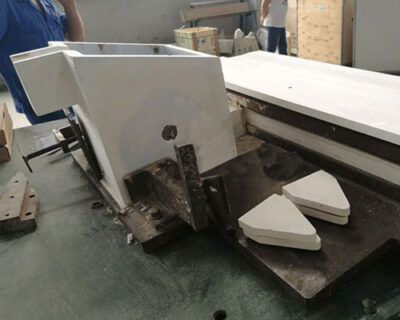When the thickness of the cast-rolled sheet is thicker, due to the certain temperature difference between the upper and lower surfaces of the melt in the casting-rolling zone, the temperature of the upper surface is slightly higher than the temperature of the lower surface, which will shift the center line of the crystal structure and cause the asymmetry of the upper and lower structures. In order to ensure the symmetry of the upper and lower organization, the post-processing organization and process performance of the cast-rolled sheet are improved, and the upper nozzle fan is retracted a certain distance when assembling the casting tips and nozzle. Its size depends on the thickness of the cast-rolled sheet.

The front end of the ear is appropriately inclined to the outside of the two ends of the casting nozzle, and there is a certain angle with the two ends of the casting nozzle, which is beneficial for the cast-rolled plate to pull from the nozzle. The size of the included angle varies with the requirements of casting and rolling, generally 15°, 30°, and 45°. The use of 45° ears can reduce or eliminate the edge cracking phenomenon of cast-rolled sheets, especially pure aluminum sheets, and reduce the amount of trimming in subsequent cold-rolling passes and improve the yield; however, cast-rolled strips are easy to expand to both sides, and the edges. Since the thickness is thin, the bandwidth increases, causing the strip to be rolled up, especially when the liquid level of the front tank is adjusted or the level of the front tank fluctuates. When producing alloys with a relatively large crystalline interval, such as 5052, sometimes diagonal cracks may occur at the edges. Using 15° ears can avoid the above defects, but it is easy to produce edge cracks. Edge cracks will not affect the process performance, but may reduce the yield. Use 30° ears between the above two.

